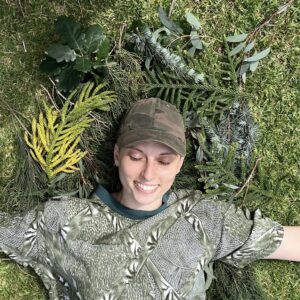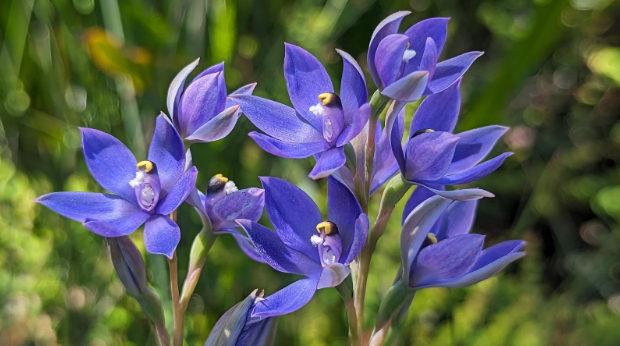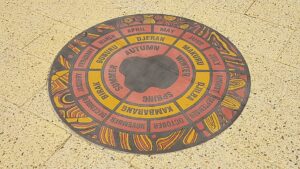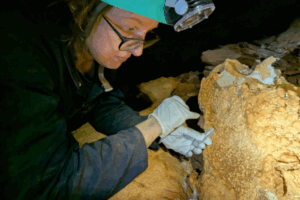Great sun orchids (Thelymitra grandiflora) have a single green stem adorned with bright, star-shaped blooms.
These true blue beauties were presented within an exhibition of threatened Australasian orchids at this year’s Chelsea Flower Show in London.
Judges awarded them a gold medal.
Professor Kingsley Dixon from the University of Western Australia orchestrated the Australian section of the exhibition. He says the show was magical.
“We felt the world stop for a moment, and saw 12 little Australian orchids stand tall at the centre of the world’s greatest plant show,” says Kingsley.
This win is emblematic of a larger cultural shift. Traditionally, large-scale installations of showy species have dominated horticultural prestige.
But in recent decades, a different sensibility has emerged – one that prizes ecological value, uniqueness and conservation stories.
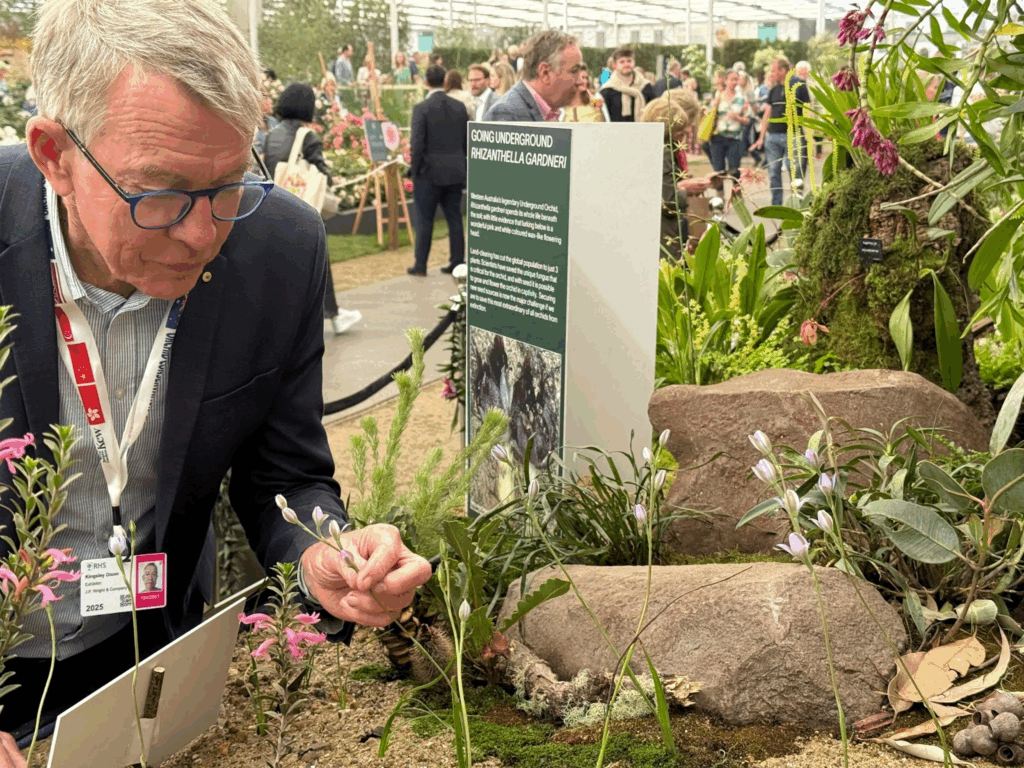
Credit: Supplied Kingsley Dixon
Defying the odds
The orchids’ journey to Chelsea was just as extraordinary as the award-winning blooms.
Kingsley had a tight deadline to achieve a seemingly impossible task.
He had less than a year to orchestrate the bloom of the orchids during a show held 6 months ahead of their natural flowering season in a different climate.
This challenging scientific process requires years of rigorous work.
Luckily, Kingsley had a colleague cultivating Australian orchids in Germany, who was willing to send them over.
They nearly didn’t make the journey. On the eve of the show, courier complications left the precious plants stranded at an airport.
With a stroke of luck, the orchids arrived just in time for their golden moment.
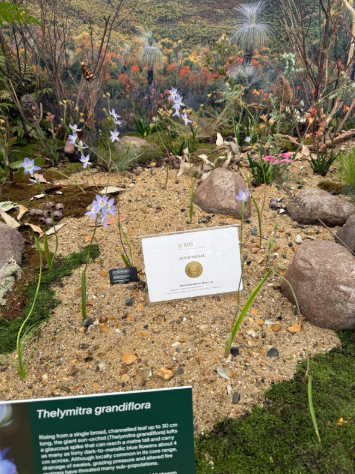
Credit: Supplied Kingsley Dixon
Orchids like no other
Sun orchids (Thelymitra) are globally renowned for their vivid colouring.
They are the only genus of orchids that boast flowers of genuine blue hues.
These unique plants have a mesmerising trick. In bright sunlight, their flowers open, revealing exuberant petals.
Just in time for judging, “the Sun came out, the petals opened and the flowers shone,” says Kingsley, with a tone of relief.
A Win that Sprouts Hope
The orchids’ gold medal reflects a global shift in horticultural values.
Kingsley says his minimalist display was dismissed as insufficiently spectacular.
Within a sea of large-scale installations, the small orchids were easy to miss.
The Australian exhibition required visitors to lean in, look closely and engage attentively – a contrast to the extravagant displays typical of flower shows.
“That’s the great thing about our bushland orchids,” Kingsley beams. “You have to find them, and then they find you.”
The Chelsea Flower Show win demonstrates a rising appreciation for native species and their conservation.

Credit: Toby Melville/WPA Pool/Getty Images
A Bittersweet Story
For Kingsley and his team, the Chelsea display was more than an award-winning exhibit.
It highlighted an uncomfortable truth: orchids are now the most endangered plant group in Australia.
Though some of WA’s 407 orchid species remain locally abundant, populations are declining due to habitat clearing, invasive species and inappropriate, European-style fire regimes being used instead of First Nations protocols.
We must act quickly to “protect what we’ve got, restore what we can and engage people about the unique values of our bushland,” Kingsley urges.


